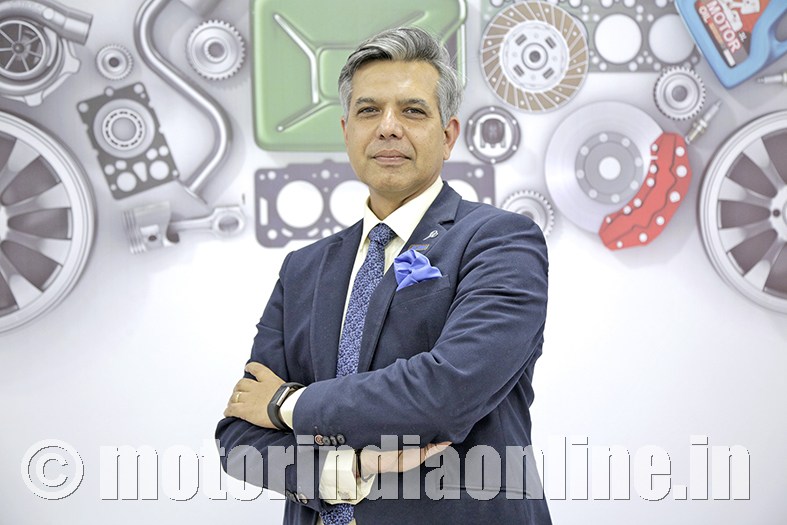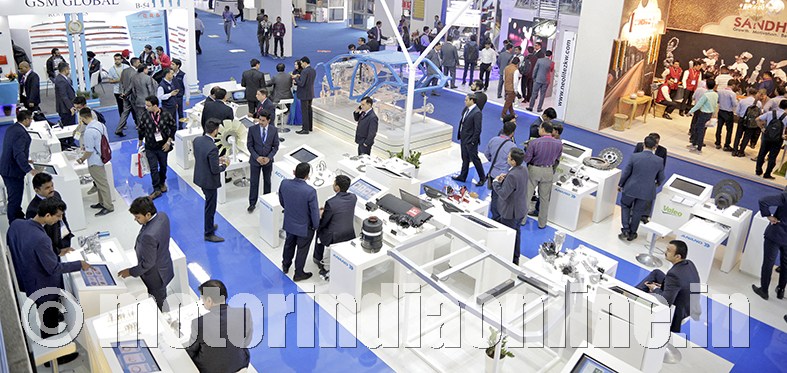India is going to leapfrog to EVs bypassing the hybrids. The Indian automotive industry is gearing up, but the auto component sector is scrambling to play catch up. In the times of xEVs (hybrid and electric vehicles), the aftermarket is also probably going to face some tough times. At the 14th Auto Expo Component Show 2018, the industry’s confidence and the possible insecurities were evident. If around the world strong growth is forecast for hybrid and electric vehicles (xEVs), in India the xEV market is still rather tiny. And hence the obvious teething troubles.

For the automotive and its component industries to gear up for the EV future needs a tremendous push from the Government. The National Electric Mobility Mission’s Faster Adoption and Manufacturing of Hybrid and Electric vehicles or FAME level envisages Rs. 795-crore financial boost to the industry in the first two fiscals starting with the current year.
Industry experts say that Indian component suppliers are technologically lagging by roughly a decade to meet the EV challenge. By 2025, the xEV component segment is expected to grow to roughly $12 billion in India. Even though the declining costs of lithium-ion batteries by 30-35 per cent is expected to make EV sales more attractive in India the deterrent factor is that the charging infrastructure needs to be developed yet.
xEVs require 80 per cent few moving parts than the traditional vehicles, which means lower mechanical complexity too. Their components also undergo less wear and tear that can hurt aftermarket sales. The Indian component suppliers can engage in the business of parts and assemblies of e-motors, thermal management, connectors and power electronics by way of aligning themselves with the EV segment. In the passenger bus segment, the current scenario states EV penetration is possible only through incentives and 12 years battery warranty and that too in the intra-city sector owing to the yet to be resolved ‘range anxiety’ issues.
A post-event chat with Mr. Vinnie Mehta, Director-General, ACMA, revealed how the association is handling the challenges that can either add to or rob the Indian automotive component industry of staying ahead in the race to the EV age.
In your opinion, has the focus of the 14th Auto Expo Component Show been achieved?
This probably is the first time when we have had global CEOs and purchase delegations in large numbers visiting the show. So the primary focus I think has been achieved. Secondly, there are many regulations that the Government is serious about, like safety, emissions, environment, or transitioning to BS 6 and, in that context, there have been questions about the preparedness of the component industry. The show answered them in the affirmative.
And the best part is that this show has become technology-focused and the participants have highly relevant products and solutions, whether for BS 6, safety, emissions or light-weighting. This show has also made evident that many Indian companies are now filing for patents or are showcasing patented products.
What were the major challenges in organizing the show in view of the poor infrastructure at the venue that’s an obvious eyesore?
The biggest challenge was that we do not have a venue any more. We had to decline participation from probably 300 or more companies. And for the 1,200 Indian participants, 20 international delegations and seven country pavilions, we had to ration the space. Unless we build infrastructure, our growth will be constrained, but we have the capability to showcase the best of what we are today.
You mentioned the preparedness of the auto component industry to take on EVs by 2030. The insecurity was visible because of the less number of moving parts in EVs. How does ACMA plan to reassure the component manufacturers?
If you compare the challenges of transitioning to BS VI and taking on EVs, the former seems easier because the industry has an idea about the number of vehicles. But with EVs, its amorphous because there is no roadmap from the Government yet and hence individual automotive companies cannot have their vehicle manufacturing plans. Since the number of moving parts will go down, so they also need to know how to leverage their existing strengths to move forward, diversify or should they exit the industry? But, according to our studies, the best case scenario for 2030 would be only 18-20 per cent of the vehicle base which will go electric.
But the component industry is at least a decade behind when it comes to electric mobility technology. The latest is that the banks have started questioning the component industry’s investments in the traditional upgradation BS VI because the payback period is 10-12 years, which means it will be 2030 and by then it will become redundant. So, the sooner the Government announces the roadmap the better it is for the industry.
So, what needs to be resolved urgently?
We are one of the largest employment generators in the industry. But we neither have the technology nor the right skill set. Our cost of financing is high, and we are the highest interest rate countries in the world. Both our technology creation index and industry-academia linkage rate poorly. There is tremendous amount of work that needs to be done. The Government can help the industry by way of R&D which is critical for the development of technology and us being competitive.
In the inaugural session, the ACMA President requested the honorable Ministers of Heavy Industries and Commerce to integrate AMP 2026 in the new industrial policy that is being formulated. What is the future of automotive industry in that light?
We have had a successful Automotive Mission Plan 1. Regarding the integration of AMP 2026 into the proposed industrial policy we do not wish for multiplicity of policy announcements. But the challenges are that when we began working on the AMP four years ago, there was no concept of e-mobility on the horizon. Currently, the Ministry of Commerce is working on a new industrial policy, while the Ministry of Heavy Industries is drafting a new auto policy. The logical idea is for these two to converge.
What kind of improvements are you looking forward to in Auto Expo 2020?
As an industry we have delivered. Now it is up to the Government to deliver on the infrastructure. There’s enough assurance from it that we will have a world-class venue in place by 2019. We are ready.
